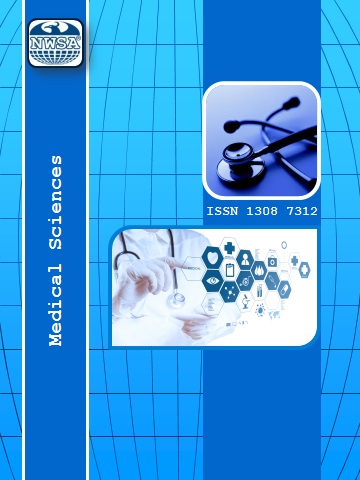HASTA VE YAKINLARININ ERKEK HEMŞİRELERE İLİŞKİN GÖRÜŞLERİNİN BELİRLENMESİ
Nurten ALAN1
,
Özlem UĞUR2
Hemşirelik yasasındaki (2007) değişiklikle, kliniklerde çalışan erkek hemşire sayısı artmaktadır. Kesitsel ve tanımlayıcı tipte olan çalışma, hasta ve yakınlarının erkek hemşirelere ilişkin görüşlerini belirlemek amacıyla yapılmıştır. Veriler, 20 Mayıs 2016 ile 20 Nisan 2017 tarihleri arasında bir üniversite hastanesi Dahiliye 1-2, Genel Cerrahi, Nöroşirurji, Ortopedi, Kadın Hastalıkları-Doğum Kliniklerindeki hasta ve refakatçılarından çalışmaya katılmaya istekli, iletişim engeli olmayan, onsekiz yaş üzeri hasta ve/veya yakınlarından elde edilmiştir. Çalışmaya başlamadan önce Başhekimlikten ve Etik kuruldan izin alınmıştır. Analizinde Ki-kare, sayı, yüzdelik testler kullanılmıştır. Çalışmada 268 hasta/yakınına ulaşılmış; %63.4ünü (n=170) hasta yakınları oluşturmuştur. Katılımcıların %56.7si (n=152) kadın, %53.4ü (n=143) 36-60 yaş arasındadır. Yüzde 44.4ünün (n=119) erkek hemşireden bakım aldığı saptanmıştır. Erkekler de hemşirelik yapabilir sorusuna katılımcıların %82.5i (n=221) ve iyi bakım verebilir sorusuna %72si (n=193) evet yanıtını vermişlerdir (p=0.038). Erkeklerin her serviste çalışabileceğini düşünenlerin oranı %71.3tür. Erkek hemşireler sadece erkek hastalara bakım vermelidir ifadesine %55.2si (n=148) hayır yanıtını vermişlerdir. Katılımcıların erkek hemşireye yönelik bakış açılarının pozitif olduğu söylenebilir.
Keywords
Bakım,
Cinsiyet,
Erkek Hemşire,
Meslek,
Hasta ve Yakınları,
 +90(535) 849 84 68
+90(535) 849 84 68 nwsa.akademi@hotmail.com
nwsa.akademi@hotmail.com Fırat Akademi Samsun-Türkiye
Fırat Akademi Samsun-Türkiye
